|
Oct
16, 2011 NYQS at Elaine's Apartment
Present:
Members:
Bo
Lawergren
Elaine
Sheng
Peiyou Chang
Stephen Dydo
Shihhua Yeh
Yuni Han
Ralph Knag
Guests:
Weijun
Wang
Zhiyu Liu
Shanjiao Liu
Chanpen Knag
Ting Liu
Jason Ginsberg
Sue Rissberger
James Yi Zhan
Sam Zhang
Summary
Thanks to Zhiyu Liu
we were able to meet with her uncle, Shanjiao Liu, one
of the 12 recognized guqin masters of China. Mr. Liu
spoke about his work and the qin in China. Stephen
talked about the Society's recent trip to Taiwan. Mr.
Liu then played several pieces, followed by several
other players and then he played one final piece
Shanjiao
Liu 刘善教

Zhiyu introduced us
to her uncle, Shanjiao Liu. Mr. Liu is the chief of
Zhenjiang MengXi Qinshe(镇江梦溪琴社)
and an expert of MeiAnPai(梅庵派)
He then gave a lecture about his work and the qin in
China with the help of translation by Zhiyu and Peiyou.
He came to the US to
give a concert in Tempe Arizona, which is a sister city
of Zhenjiang, China (
http://www.tempesistercities.org/meet-our-sister-cites/zhenjiang-china/).
as part of Chinese culture presentation. They are not
familiar with the guqin, but they think it sounds
beautiful.
He told us that
UNESCO has included the qin on the list of "the
Intangible Cultural Heritage of Humanity"
(http://www.unesco.org/culture/ich/en/RL/00061) arts
that should be protected. He's recognized as one of the
twelve living masters of the instrument. He repesents
the southern Mei'An school which is associated with
Shandong, the land of Confucious. His father also heped
spread the Mei'an school.
He travels all over
China and has been influenced by folk music. This has
helped his art to be closer to current day feelings.
He's also studied other styles.
Questions:
Where do you
teach?
He teaches in a
conservatory rather than a university, although he
attends conferences at universities. He gives private
lessons as well.
What is the role
of Guqin schools in China today?
Each school has
their own pieces, but often there is study of other
styles as well.
What about silk
strings?
Silk is best for
home use. Metal is used for performance. Silk strings
are affordable again and the best ones are from Hong
Kong. Silk strings are more sensitive and require more
control. Metal has a duller sound and requires a
different technique. Qins are louder today then in
older times as well. With silk the quality of the qin
is more important. The quality of silk strings is worse
today than forty years ago. (there was a comment that
silk itself may be of poorer quality)
Is qin music
becoming more popular?
Yes. Three things
are helping:
The
UNESCO Heritage declaration has helped get government
backing. This has allowed more education and shows.
Higher
life styles has made it more affordable
It has prestige
People
can make a living from play qin now. There's no money
from UNESCO directly though. His job is to raise money
for his qin organization. He teaches as well. They do
charge for concerts - they usual have several masters
to draw a crowd.
He often plays solo
but sometimes he has duets with a xiao. Some people do
new kinds of music as well as ancient pieces.
The oldest qins from
the Tang/Sung dynasty are very rare. There are perhaps
thirty in China, but only seventeen are certified.
There is one in Washington DC. He does not think that
that qins in Japan are as old. Masters will often only
sell their ancient qins to skilled players.
Stephen Dydo
Stephen then showed
us pictures of their trip to Taiwan. John Thompson,
Peiyou Chang, Marilyn Wong-Gleysteen and Stephen
represented our society at this gathering. Yuan
Jung-ping now as a several hundred year Japanese style
house in Taipei that he wants to make into a permanent
Guqin exhibition (Qin Dao Guan Taipei Qin Hall on
Qidong street) that will replace his mountain place.
He's seeking government and private money to make this
happen. There was a conference and a concert for fifty
people at the Qin Hall on October 1. The next day
Jung-ping, John, Marilyn, Peiyou and Stephen gave
another for five hundred people in central Taiwan.
Stephen played his
electric qin and has loaned it to the museum.
Mr. Liu mentioned
that he knows Yuan Jung-ping. He showed him a Song qin.
There were lots of nice pictures of our members and our
founder.
Shanjiao
Liu 刘善教

Mr. Liu then played
three pieces:
Lament at Changmen
Palace (Changmen Yuan 長門怨)
Mei'an style
Mountain Life
(Shanju Yin 山居吟)
Guangling style
Wild Geese Descend
on a Sandbank (Ping Sha Luoyan 平沙落雁)
He said that Ping
Sha Luoyan represented the happy life of geese. They
were migrating from north to south where it is warmer
and better. People wanted to be like the carefree
geese; alas the people lived with frequent wars and
troubles.
Peiyou
Chang 張培幼
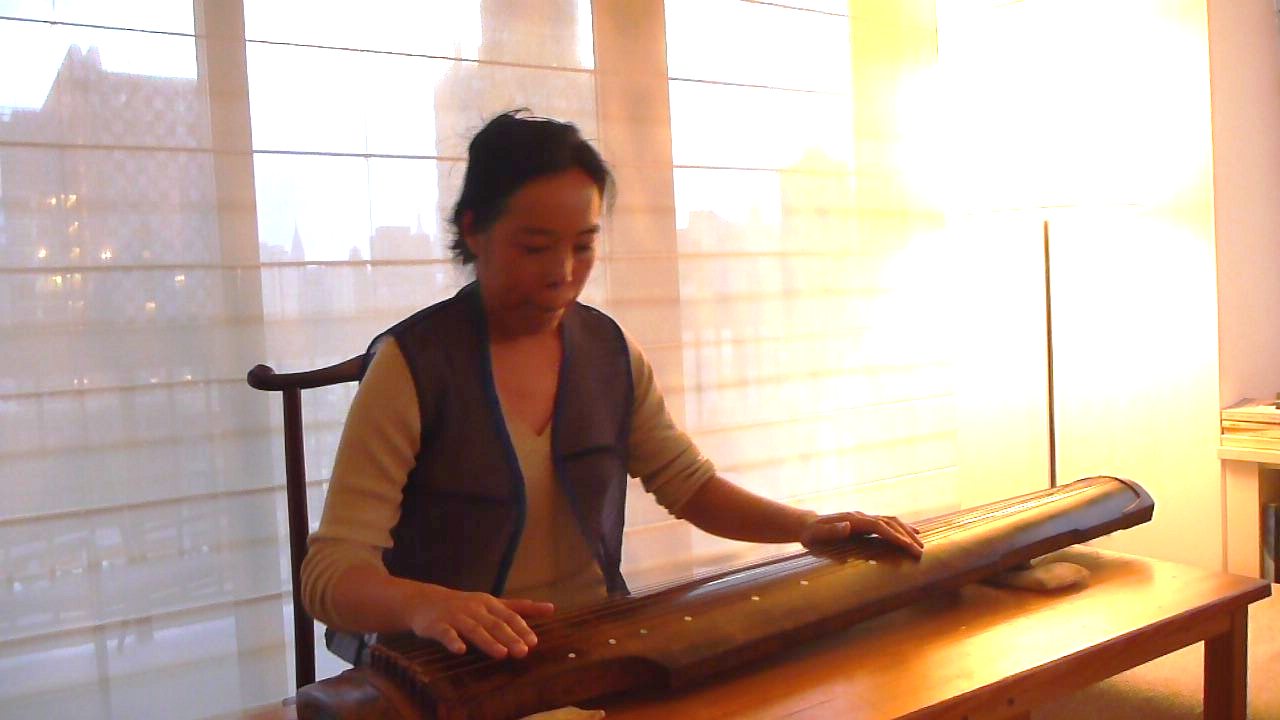
Peiyou
played Water Flowing over Pebbles (Shishang Liu Quan
石上流泉)
Yeh
Shihhua 葉時華
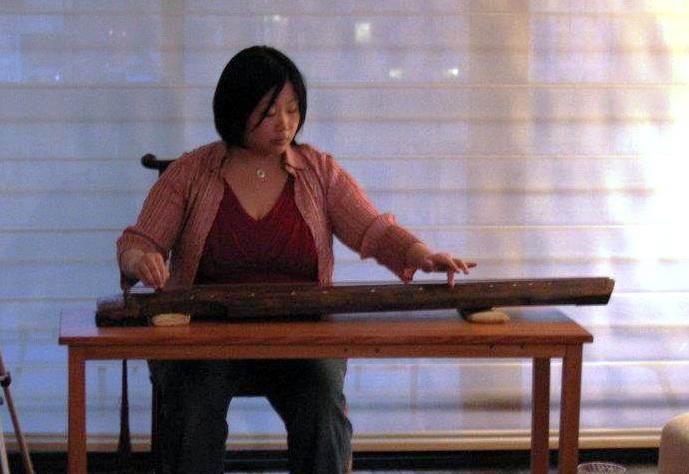
Judy (Shihhua)
played Invocation of Wind and Thunder (Feng Lei Yin 風雷引
) Mei'an
style and Phoenix Seeks his Mate (Feng Qiu Huang 鳳求凰)
with singing.
Stephen Dydo
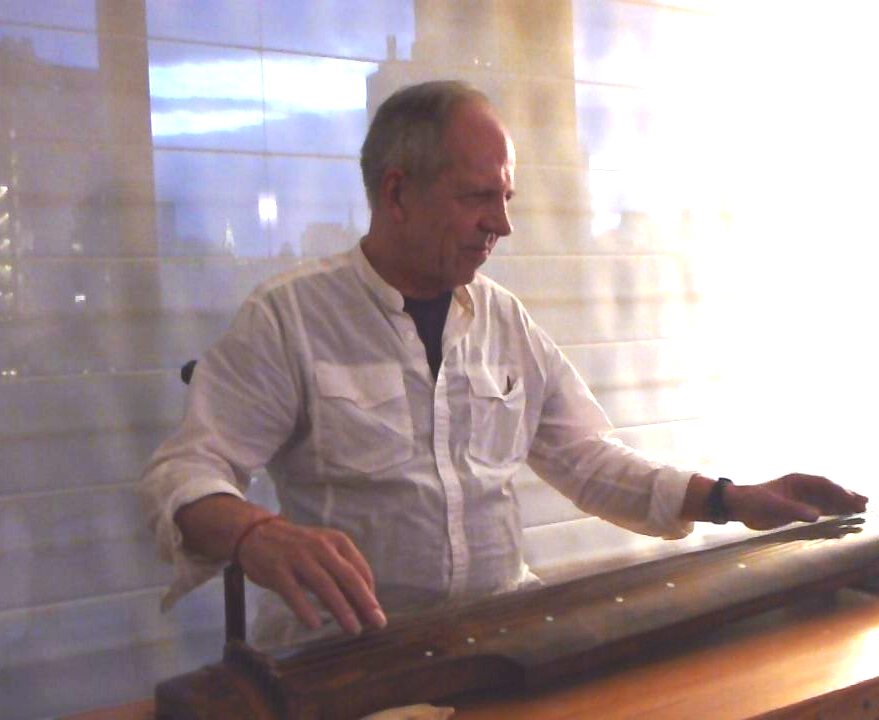
Stephen
played Autumn at the Frontier (Qiu Sai Yin 秋塞吟)
Zhiyu
Liu
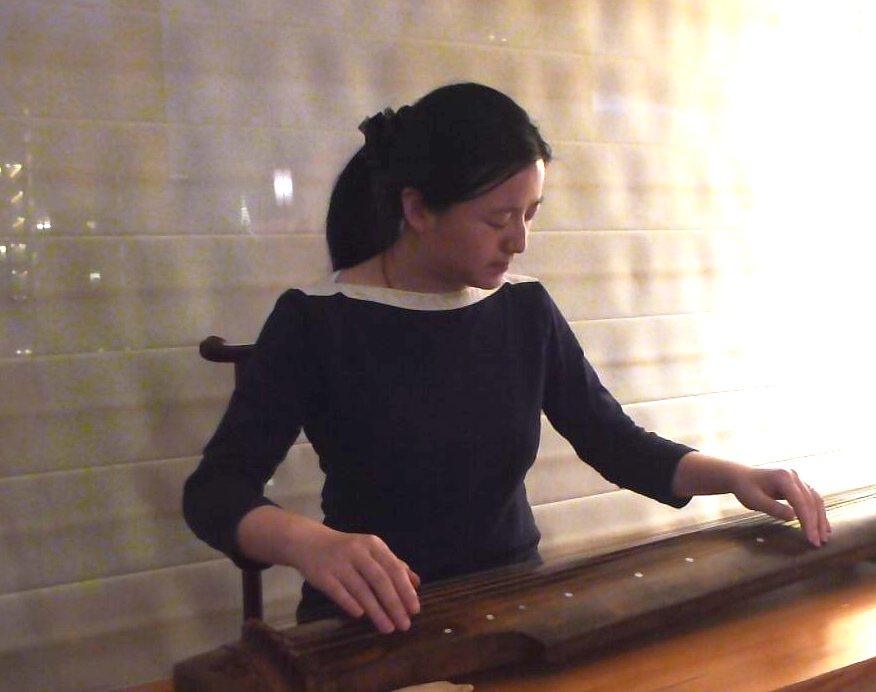
Zhiyu
played Moon over Guanshan (Guanshan Yue 關山月)
Ting
Liu

Ting
played Mist and Clouds over the Xiao and Xiang Rivers
(Xiao Xiang Shuiyun 瀟湘水雲)
Sam
Zhang

Sam
played A Drunken Fisherman Sings in the Evening (Zue Yu
Chang Wan 醉漁唱晚)
Shanjiao Liu
Mr Liu
concluded with Returning Home (Gui Qu Lai Ci 歸去來辭)
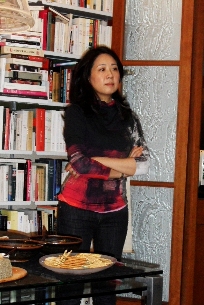
Thanks go to Elaine
for hosting this great gathering and to Zhiyu Liu and
Shanjiao Liu for making it possible.
|